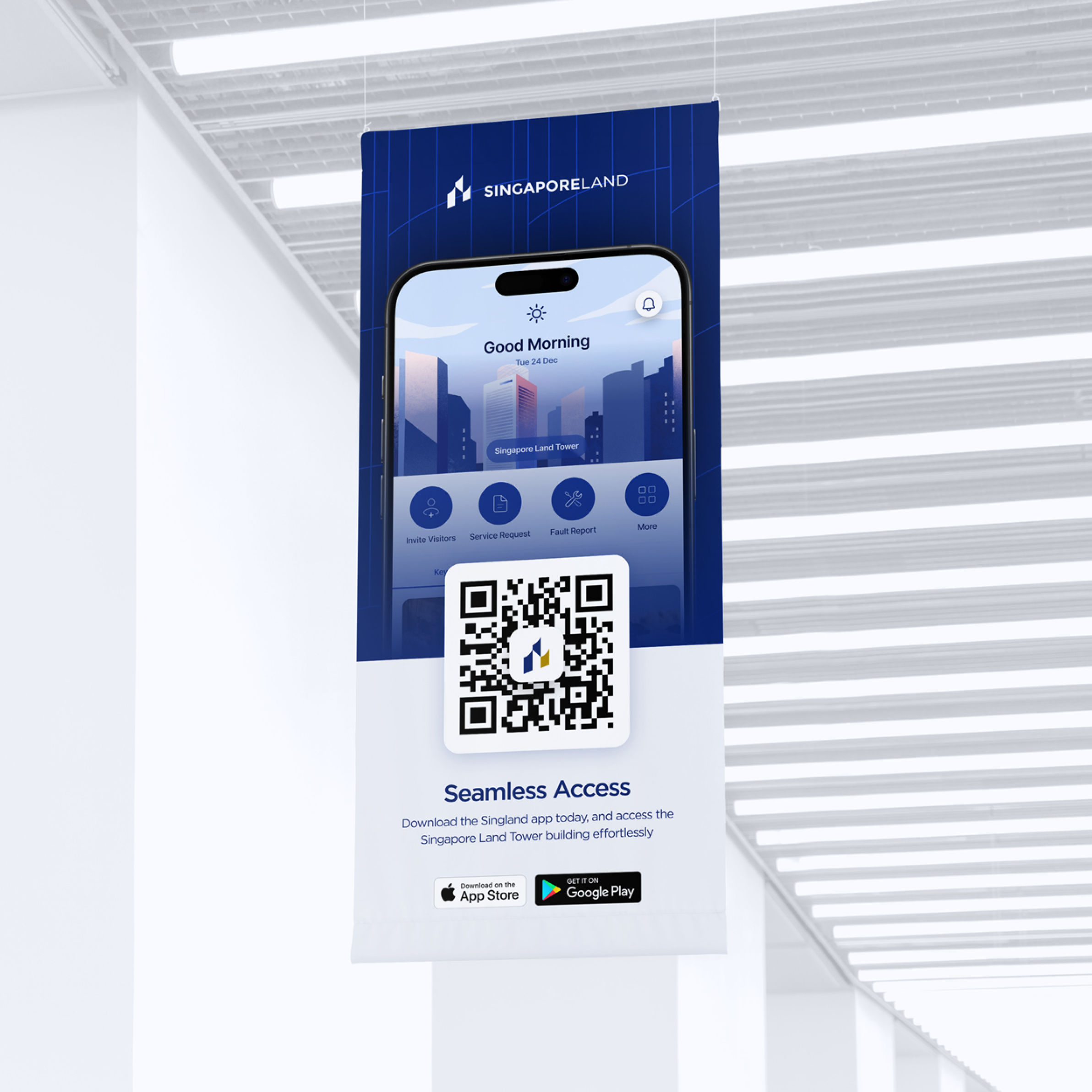←
SingLand
A comprehensive digital transformation project redefining tenant and building management through user-centric design and technology integration.
Location
Singapore
Role
Product Desiner
Collaborator
Collaborator
Studio
Greydient Lab
Tools
Figma
Award
London Design Awards – Gold , Singapore Good Design Awards 2024
Smart Building Management System for SingLand
As a Product Designer, I contributed to transforming tenant and building management for SingLand, a leading real estate entity listed on the Singapore Stock Exchange. This project aimed to digitize complex property management workflows, integrating various hardware and software solutions into a unified system that enhances operational efficiency and user experience.



Problem:
How can we enhance building management efficiency and tenant satisfaction through a user-centric digital platform? How can we design a seamless interaction through application and dashboard.
Process:
- User-Centric Design & Multi-Level Flows: Collaborated with stakeholders to define role-specific needs for staff, visitors, tenants, building managers, executives, administrators, and security personnel. Developed tailored user flows for each access level, ensuring a seamless experience.
- Role-Based Access Control: Designed a structured permissions system to regulate actions at various hierarchy levels, optimizing authorization and security.
- Seamless Integration: Ensured a smooth interaction between the mobile application and dashboard, enabling real-time data synchronization and user management.
- Collaborative Development & Testing: Partnered with another designer and a UX researcher to conduct iterative testing through focus groups and usability studies. Flew to Singapore for on-site testing, validating workflows with real users.
- Design System Expansion: Took over and extended an evolving design system, developing UI assets for both the dashboard and mobile app to maintain a cohesive experience.
- Wireframing & Prototyping: Progressed from low-fidelity wireframes to high-fidelity prototypes, validating interactions through usability testing and stakeholder feedback.
- Stakeholder Training & Handoff: Delivered training sessions, user manuals, and documentation to ensure a smooth transition for clients and internal teams.


.png)
Challenges:
- Complex Access Levels: Simplified navigation for different user roles, ensuring clear distinctions while maintaining an intuitive experience.
- Reducing Friction in User Journeys: Iteratively refined user flows by reducing unnecessary steps, consolidating screens, and improving efficiency.
- Seamless Integration with Hardware: Designed interfaces that synchronized with third-party systems, including lift access, turnstiles, and parking management.
- Optimized Interaction Design: Balanced functionality with ease of use, reducing cognitive load while enhancing accessibility.
Solution:
A comprehensive Building Management System (BMS) application that streamlines operations, enhances communication, and provides real-time insights for all user roles within the building ecosystem.

.png)

Outcome:
By applying human-centered design principles, we successfully delivered a fully integrated digital ecosystem that optimizes efficiency, user engagement, and building management at SingLand’s flagship commercial property. The final system included:
- User Adoption: Achieved over 1,000 downloads on Google Play within the initial months of launch.
- Building Occupancy: Post-renovation, Singapore Land Tower reached a committed occupancy rate of 74% by the end of 2023, up from 65% in 2022.
- User Feedback: While specific efficiency metrics were not provided, the app's adoption and the building's increased occupancy suggest a positive reception among tenants and management.
- A mobile tenant application for seamless service requests and access management.
- A dashboard for property managers to oversee building operations and analytics.
- A self-service kiosk to streamline visitor registration and security access.
This project not only digitized SingLand’s operations but also established a scalable framework for future smart building integrations. This project exemplifies the integration of user-centered design principles and collaborative development to create a digital solution that addresses complex operational needs in a corporate environment.





